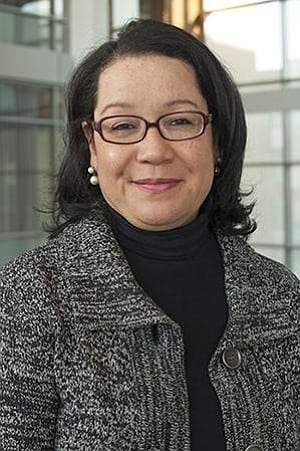Doctor works to make sure everyone has great medical care
Jonca Bull, M.D., an ophthalmologist, is the first permanent director of FDA’s Office of Minority Health. After 12 years in various roles at FDA, she left to work in the private sector and serve as an assistant clinical professor at George Washington University—a post she still holds. She returned to FDA to direct the Office of Minority Health in August 2012.
Q: What lured you back to FDA?
A: The Affordable Care Act required that all divisions of the Department of Health and Human Services establish formal offices of minority health. I have a passion for ensuring that we’re doing the best we can to give the best medical care to all. I see solving the problem of minority health disparities as a dimension of improving the entire health-care system.
Q: What are your office’s top priorities?
A: Our office has three main priorities. We are working to strengthen FDA’s capacity to address minority health and health disparities. We also are working to improve regulatory science’s understanding of how certain populations respond differently to some medical products. African Americans and Hispanics, for example, have higher rates of diabetes, hepatitis C, HIV/AIDS, obesity and cardiovascular disease. Asian Americans suffer higher rates of hepatitis B. Third, we place an equal priority on effectively communicating critical information, particularly to underserved, vulnerable populations.
Q: What efforts are underway to address health disparities?
A: We are dedicated to ensuring that minorities are included in clinical trials, which involve testing new drugs, biologics and devices under controlled conditions. Historically, women and minorities have been severely underrepresented. This can prevent scientists from discovering whether certain medical products work differently in different demographic or ethnic groups. That exclusion also means that minorities and women are missing the possibility of getting access to investigational products that may be beneficial. Finally, research equity demands shared risk.
Q: Is there evidence that minorities might have different reactions to certain drugs?
A: Yes. For example, there can be differences in how ethnic groups metabolize certain medications. We also know there are ethnic differences in how people process drugs, such as the blood thinner warfarin, that involve certain enzymes in the liver. And many African Americans tend to be more responsive to diuretics and less responsive than whites of European ancestry to beta blockers and ACE inhibitors, both of which are used primarily to lower blood pressure and treat heart disease.
What we know and can learn about ethnic differences can inform prescribing and dosage decisions. This is not an absolute—people vary—but ethnicity can be an important consideration in determining treatments.
Q: Why have minorities historically been underrepresented in clinical trials?
A: A major barrier is minorities’ distrust based on past abuses. An infamous example are the Tuskegee experiments, in which health officials recruited poor black sharecroppers to study the natural progress of syphilis without informing them they had the disease or offering the penicillin that could have cured them.
There also are practical issues. Lower-income people may have transportation problems and less flexible jobs. There are concerns that commercial clinical trial sponsors don’t work aggressively to recruit minorities because of the perception that special needs will slow down recruitment and participation.
Q: How are you trying to overcome these barriers?
A: We’re working closely with patient advocacy groups to let patients know that protections are in place, including independent review boards, to make sure these abuses are not repeated.
We also work with associations of minority health professionals to increase the number of minorities in clinical trials.
Q: Can you describe other efforts in the area of minority health?
A: We’re actively involved in communication strategies to ensure that information about FDA-regulated products is getting to minority communities, including those with limited English proficiency.
It’s important that minority populations understand medical product risks and ways to mitigate them. We get out information through various channels. Those include our website, conferences and collaborations with groups, such as the American Heart Association and the American Diabetes Association, that are fighting diseases that affect minorities to such a high degree.
We also reach out to minority health-care professionals and scientists. For example, advisory committees play a crucial role at FDA by providing additional expert input into decisions, including drug approvals. My office supports the agency’s recruitment for those expert panels to ensure a diverse pool of candidates.
Q: Does your office work with academia, too?
A: Yes. We are participating in FDA’s two Centers of Excellence in Regulatory Science and Innovation at Georgetown University and at the University of Maryland. At those institutions, we’re looking at HIV/AIDS issues and a study of genomic differences in minorities. Additionally, we fund minority-health research at the University of Hawaii, the HIV/AIDS center at Meharry Medical College in Nashville and in health literacy at the University of Nebraska.
Q: How many people work in the Office of Minority Health?
A: Four, including an intern. I believe in what Margaret Mead once said: “Never doubt that a small group of committed citizens can serve to change the world.”






